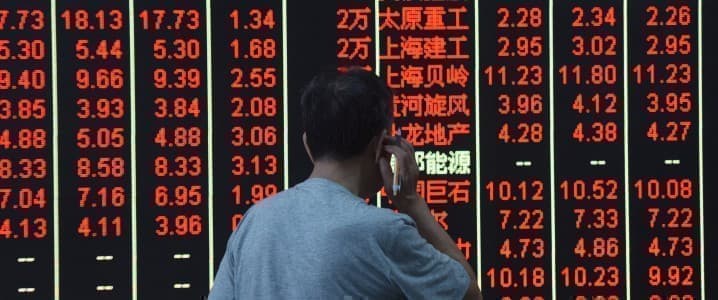Last week’s collapse of WTI Crude futures to -$37 a barrel left a lot of individual investors burnt.
Well-known energy trader Pierre Andurand, for example, warned traders of massive losses, tweeting on Tuesday: “This shock is real. Be very careful out there. We are going to hear about crazy losses in the days and weeks to come.”
Some traders are counting the losses a week after the price crash, which many attributed to the imminent expiry of the May futures contract. Others noted the connection with the lack of oil storage capacity in the United States.
The ripple effect of negative WTI Crude prices went far and wide, burning even retail Chinese investors who aren’t allowed to invest in the international crude oil futures markets directly.
One may wonder how China’s investors—banned from opening non-Chinese accounts to trade crude oil futures—got burnt in this market carnage. Here’s how.
Chinese retail investors cannot directly trade WTI Crude or Brent Crude, but Chinese state-held lenders offer structured products with exposure to the price swings of the two most active international crude benchmarks.
For example, Bank of China, one of the biggest lenders, has a paper investment structured product for retail investors linked to international futures contracts, including WTI Crude and Brent Crude. The bank sells this product, Yuan You Bao, to individual clients. Other banks such as Agricultural Bank of China (ABC), Industrial and Commercial Bank of China (ICBC), China Construction Bank (CCB), and Bank of Communications (BoComm) also have similar crude-linked products.
Since March, when oil prices collapsed due to the demand crash and the (temporary) end of the Saudi-Russian partnership in OPEC+, retail clients in China have been increasingly buying crude-linked structured products, betting on ‘buying the dip’, and hoping that prices would recover from what they had probably perceived was the bottom of oil prices.
But the demand destruction and swelling global inventories, alongside a rather weak pledge by OPEC+ to remove 9.7 million bpd from the market in May and June – weak compared to demand loss three times higher – led to an unprecedented crash in WTI Crude May futures into negative territory as traders rushed to get rid of the May contract to avoid owning physical oil barrels for May delivery.
This left a lot of investors in ETFs linked to oil, such as the United States Oil Fund LP (NYSEARCA: USO), exposed to losses.
It also burnt a lot of Chinese retail investors who had bet on ‘buying the dip’ of crude oil prices by buying and owning the structured crude-price-linked products of the Chinese banks.
Last week, following the turmoil in international oil markets, Bank of China suspended the opening of new positions in its product. Investors started complaining that they weren’t adequately informed of the actual risks of betting on crude oil price swings. University student Stephanie Peng told Reuters she bought the product because she thought it was a safe wealth management product.
Sources with knowledge of the matter told Caixin Global that Bank of China’s Yuan You Bao product alone burnt more than 60,000 Chinese retail investors with a total of US$1.4 billion (10 billion yuan).
Premium: 2 Stocks To Consider As Oil Nears $15
Investors cried foul about the insufficient and inadequate disclosure of the banks regarding trading in structured paper products linked to crude oil prices. A staffer at Bank of China, on the other hand, told Caixin that the product was marketed as a “normal wealth management product.”
Bank of China said that it would take responsibility for the losses incurred by individual investors in the crude oil trading product, China Daily reported over the weekend.
“We will comprehensively review our product design, as well as risk management and its process, and take due responsibility under the legal framework. We and our clients will pull together in times of trouble, and we will do our best to protect their legitimate interests,” the bank said in a statement, as carried by China Daily.
The fact that even China’s state-controlled banks are trying to save face with their retail investors goes to show how far and wide the price crash reverberated through the global markets, and how smaller and inexperienced investors were stung while chasing profits in the most unpredictable crude oil market ever.
By Tsvetana Paraskova for Oilprice.com
More Top Reads From Oilprice.com:
- Russia’s Oil Output Flat In March As OPEC+ Cuts Loom
- Shale's Decline Will Make Way For The Next Big Thing in Oil
- Hackers Have Ailing Oil Industry In Their Crosshairs

















